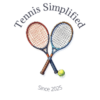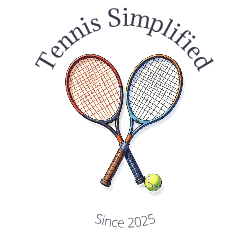Are you ready to buy your first tennis racket? I know it can feel overwhelming – there are so many options out there! While many of us start by borrowing rackets or using old ones from the garage, there comes a time when you want something to call your own (and yes, maybe something that looks nice and pretty too!).
In this guide, I’ll walk you through the most important factors to consider when choosing your first tennis racket, based on my experience helping beginners find their perfect match.
Key Factors to Consider
1. Grip Size: Finding Your Perfect Fit
Grip size is crucial – it’s basically the circumference of the part you hold. It comes in 5 sizes, with 1 being the smallest and 5 the largest (if the measuremnt is in a different format then use the chart below to convert measurements!) . While some online guides suggest using the “finger gap test” (checking for a finger’s width between your palm and thumb), I’ve found it’s really about personal comfort.
Pro Tip: Here’s something interesting – I have a friend with smaller hands than mine who uses a larger grip simply because it feels better for him. That’s perfectly fine!
Important Note: If you’re unsure between two grip sizes, always go with the smaller one. You can easily make a grip bigger by adding overgrips, but you can’t make it smaller. Most players typically use grip sizes 2 or 3.
2. Racket Weight: Finding the Right Balance
For most beginners and intermediate players, I recommend these weight ranges:
- Standard recommendation: Under 300g
- For smaller players or those with lighter wrists: Around 275g
Why these weights? It’s all about preventing injury and developing proper technique. A racket that’s too heavy can:
- Impact your technique development
- Cause elbow, wrist, or shoulder problems
- Make it harder to enjoy the game
Fun Fact: You can always add weight later using lead tape – but I’d suggest talking to a specialist before experimenting with this!
3. Head Size: Bigger is Better (For Beginners)
When you’re starting out, look for a racket with a head size of at least 100 square inches. Why? It’s simple:
- Larger hitting surface = easier ball contact
- More forgiving on off-center hits
- Better access to power (who doesn’t want that?)
4. Price: Finding Value Without Breaking the Bank
Let’s talk about the different price ranges:
High-End (€300)
- What the pros use
- Great quality
- Probably more than you need as a beginner
Budget-Friendly (€30)
- Perfect for trying out the sport
- Good for uncertain commitment levels
- Basic quality
Sweet Spot (€70-120)
- My recommended range for beginners
- Good quality that will last
- Better performance than budget options
- Won’t break the bank
Making Your Final Decision
The absolute best way to choose your racket is to test different ones if possible. But don’t stress too much about making the “perfect” choice – whatever racket you select, you’ll adapt to it over time. The most important thing is getting out there and playing!
Remember, no matter which racket you choose, it’s the beginning of your tennis journey. With time, you’ll develop a special relationship with your racket as you improve your game together.
Have you already tried some rackets? I’d love to hear about your experience in the comments below!
🎾 Support Tennis Simplified:
If you enjoy our content, please consider supporting us by using our affiliate links:
- Try Amazon Prime free for 30 days for fast delivery on tennis gear.
- Save at Tennis Point with code ACPNL_WD74561.
Thank you for your support—it helps us keep creating great tennis content!

